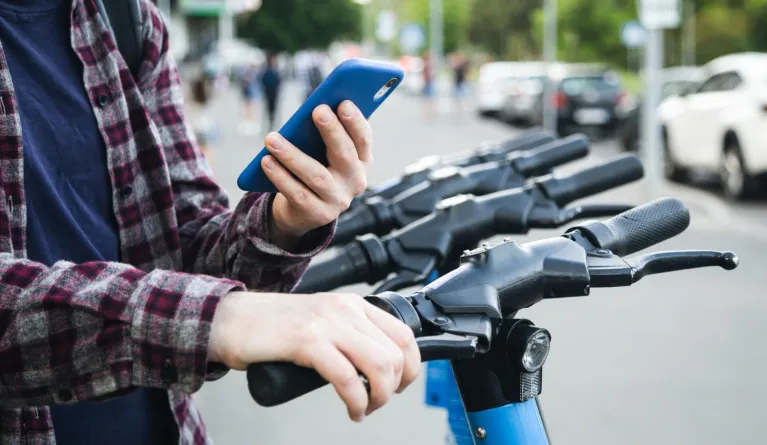Sustainable mobility as environmentally friendly means of transport
Sustainable mobility is the notion of changing transportation in a way that is more environmentally friendly. The goal is to reduce fuel consumption and emissions in such a way that will allow the ecosystem to recuperate. As a result, ‘Green Driving’ is used synonymously in the Anglo-American linguistic area. Ultimately, the aim is to implement sustainable transportation that uses fewer resources, allows for more green spaces and helps to safeguard the environment. Today we are sharing examples of sustainable mobility as an environmentally friendly means of transport.
Reducing traffic
The primary goal of sustainable mobility must be to reduce the volume of traffic which is not connected to a significant increase in ecologically friendly modes of transportation, such as public transport. There are a number of things that have to be done to encourage people to give up their cars, including:
- Financial support for public transportation.
- Expansion of the bus, train, tram and subway networks.
- Low-cost annual passes and ticket prices for public transport.
- Infrastructure networking (i.e., for congestion reduction, green waves, etc.).
- Promotion of working from home so that fewer people drive to office.
Encouraging environmentally friendly transport
Studies show that there is hardly any political support for a ban on cars in city centres. However, a reduction in the number of accessible roads and car parks for private cars can result in change. In exchange, more lanes and parking spaces will need to be made available for public transport and car-sharing services. The main reasons for this are:
- Cars have a poor life cycle assessment.
- Road traffic was responsible for 26% of all CO2 emissions in the EU in 2018.
- Of these, passenger cars were responsible for 61% of total CO2 emissions.
That is why it is important to promote alternative, low-CO2 fuels even more in the future - be it electric mobility or hydrogen.
Promoting micromobility and cycling
Closing the gaps in the transportation infrastructure is the first step in encouraging urban residents to use public transport instead of their cars (the ‘last mile’ problem). After all, the last mile issue is essential for encouraging individuals to use their cars less frequently in the long run. It is crucial to increase micromobility for the many people who do not live or work near a public transportation stop. This means:
- More small vehicles to get from the front door to public transport.
- More e-bikes, e-scooters, small electric cars, etc.
- Road marking systems for more and better bicycle lanes.
Encouraging car-sharing
Car-sharing has one advantage over passenger cars and can make the transition seem attractive: they are not required to park in city centres, where parking is limited and the struggle to find a space can be stressful. Although the market share is still quite small, it holds great potential:
- If people in the city can effectively use car-sharing services at any time, it will be much easier to leave one´s own car behind.
- The future will show how flat-rate models will help to make the switch even more convenient (e.g., price X for Y trips per month).
- Pricing, service and easy booking (e.g., via an app) will be the deciding factors in making car-sharing as attractive as possible.
Promoting autonomous driving
The future of urban mobility will be shaped by autonomous vehicles:
- ‘Use instead of own’ to lower the number of vehicles.
- Autonomous vehicles can park outside the city.
- Autonomous vehicles offer ‘more safety’ as human error is responsible for 93% of all car accidents.
Expanding electromobility and alternative drive concepts
Renewable energy sources will rule the future, and we are currently in the ‘fossil to the post-fossil age’. Given the flawed life cycle assessment, we need to reform how our transportation systems are run in order to ensure better air quality, lower noise levels and fewer emissions. One of the most promising solutions to this challenge is the expansion of electromobility and alternative fuels because only low-CO2 fuels will make it possible to comply with the emission limits and other climate targets.
Shifting logistics to the railway
To make transportation more sustainable in the future, less personal transportation must be used. Additionally, changes must be made to logistics. A strong promotion of railway transport would be a first step which brings significant benefits:
- Most trains are powered by electricity, which is often green electricity.
- Fewer trucks also mean less CO2 in the air.
- There will be more room on roads if more trains rather than trucks travel throughout the country.
Study New Mobility - Micromobility at PFH
We appreciate you taking the time to read our blog post on sustainable mobility as an environmentally friendly means of transport. If you are thinking about studying abroad and pursuing a career in this field, take a look at our Master’s degree in New Mobility - Micromobility.
We have designed this programme to help you apply the skills you have acquired with your first engineering university degree in a wide range of disciplines as well as designers who are enthusiastic about materials, locomotion and lightweight construction. As a graduate of our programme, you will be involved in the development of mobility solutions and will be able to use your knowledge to understand mobility concepts and evaluate them.
At PFH, we make sure you receive a high-quality education while making the most out of your study-abroad experience!
